- Main Page
- Age on other Planets
- Aliens
- American Flag
- Angels
- Annuals
- Auras
- Avoiding Scams
- Awareness Ribbons
- Baileys Liqueur
- Bananas
- Banana Tree, Grand Nain
- Banana Tree, Ice Cream
- Banana Tree, Zebrina Rojo
- Beekeeping
- Birth Month
- Boogaloo
- Bookmarks
- Book of Shadows
- Book List
- Boot Anatomy
- Boot Fit Guide - Cowboy
- Boot Glossary
- Boot Leathers
- Boot Makers
- Boot Retailers
- Boot Styles - Western
- Boot Toes & Heels - Western
- Boot Toes & Heels - Work
- Bullying
- Candle Colors
- Cats
- Chakras
- Chillicothe Businesses
- Chinese Zodiac
- Christmas Tree
- Ciroc Vodka
- Coffee Pods
- Color Codes Chart
- Consumer Resources
- Consumer Resources - Elders
- Country Stars
- Cowboy Hats
- Cowboy Hat Etiquette
- Cowboy Hat Sizing
- Cowboy Sites
- Craft Name!
- Credit Score Checkers
- Credit Scores
- Crystals & Gems
- Deities
- Disaronno Amaretto
- Donation
- Dream Catchers
- Dreams
- Drug Test
- Elementals
- Elements
- Eye Teasers
- Fairies
- Fairies of Folklore
- Flower Astrology
- Fonts
- Foods To Regrow
- Fortune Teller
- Free For All Links
- Friend
- Funny Things
- Fun Stuff
- Giving
- Growing Blueberries
- Halloween
- Halloween Treats
- Health Pages
- Hello!!
- Home Bar
- Horse Sites
- House Plants
- Hunger Facts
- Interesting Facts
- Karma
- Kinds of Tea
- Logger vs Lineman
- Lucky Bamboo
- Macaroni!!
- Magic 8 Ball
- Magick
- Mirror Messages
- Missouri
- Missouri Prisons
- Moon Phases
- Muses
- Mystical Unicorn
- Natal Astrology Chart
- National Foundations
- Need a Spell?
- Never Forget
- New Page Soon
- One Little Rose
- Orchid Growing
- Orchid Sources
- Ouija
- Pagan Humor
- Pagans vs.Wiccans
- PayPal.Me
- Pentagram vs. Pentacle
- Perennials
- Phobias A-Z
- Plant Care
- Plant Zone Map
- Propagating Plants
- Psychic Dictionary
- Psychic Gifts
- Psychic Reader
- Psychic Scams
- Psychic Test
- Psychometry
- Quartz Crystals
- Ragtime Music
- Recipes I like
- Roses
- Runes
- Sadie & Beethoven
- Scam Calls
- Scrying
- Séance
- Shape Shifters
- Smile
- Speed Test
- Spices You Need
- Spices I Have
- Spirit Guides
- Steel Toe vs. Comp. Toe
- Superstitions
- Symbols
- Talisman
- Tarot
- Tea Leaf Reading
- Telekinesis
- Tequila Rose
- The Ten Commandments
- Tools of the Craft
- Top Alcohol
- Top Animated Movies
- Top Comedy Movies
- Top Expensive Movies
- Top Modern Westerns
- Top 100 Westerns
- Toyota Yaris 2008
- Toyota Yaris 2012
- Tree, Calamondin Orange
- Tree, Meyer Lemon
- Tree, Persian Lime
- Tree Signs
- US Bill of Rights
- US Constitution
- US Declaration of Independence
- UV Vodka
- Weight on other Planets
- Wheel of the Year
- White Magick
- Wicca
- Wiccan Rede
- Wine Clubs
- Wines
- Wines - Missouri
- Yin / Yang
- Zodiac Signs
Needed to read PDF's
Tarot
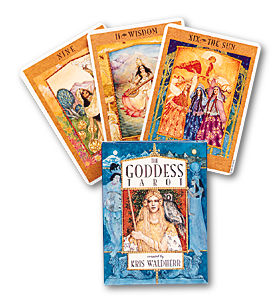 The Goddess Tarot Kris Waldherr 78 cards Drawing inspiration from goddesses honored throughout history, award-winning author and artist Kris Waldherr has created an essential tool of empowerment and transformation for women everywhere. The Goddess Tarot uses goddess stories and imagery to update Measurements: 3 1/2 x 4 3/4 |
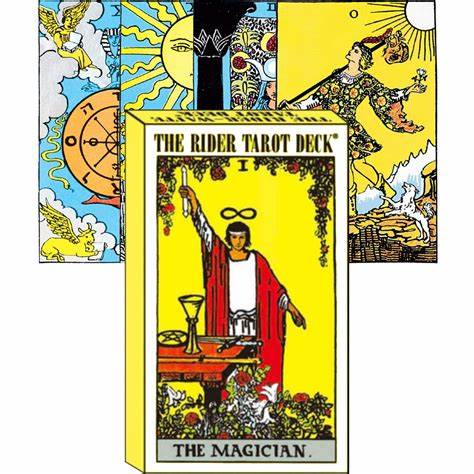 Rider Waite Tarot A.E. Waite & Pamela Colman-Smith 78 cards The world's most popular tarot deck! This deck has long been a favorite among tarot enthusiasts. Accurate color tones on each card. Measurements: 2 3/4 x 4 3/4 |
Reading a Tarot Card
The following are a series of steps for interpreting those Tarot cards that have scenes or pictures. Use as many steps as you want and in any order, although I recommend beginning with the first four steps.
By emphasizing particular steps you create your own personal style.
Draw at least one card a day (many people prefer using a basic three-card spread), and go through several of the steps below, writing down your insights in a notebook. The next day make notes about what actually happened. For important dates (when you began a job, moved, or met a significant other) continue adding comments as your insights develop over the years. In three years, drawing only one card per day, each card will have appeared 10 to 20 times. If you balance personal notes with observations of readings for others you will one day have your own book on the Tarot.
- Say the name of the card aloud.
- What number is on the card? What does this number signify (preferably in one to three words)? [Example: "2s are about CHOICES and DECISIONS."]
- [As a Tarot student, lay out all the cards grouped by number. Make lists from books of what each number means and select one to three words that best apply to all cards of that number. Same with the Court Cards: "Knights are about QUESTS and USING THE SKILLS of their suit" etc.]
- What suit is the card? Name several characteristics of the suit. ["Cups are about FEELINGS and EMOTIONS..."]
- Put item two and three together in a short sentence or a question. ["What choices are you making based on emotions?"]
- SIMPLY DESCRIBE THE CARD AS IF THE OTHER PERSON COULD NOT SEE IT. ["Two people hold out cups to each other. The one on the right reaches forward with his right hand... above them are..."]
Repeat your description in the first person, present tense: ["I am holding out a cup to another. I reach forward with my right hand..."]
If reading for another you can ask them to do this, or turn your descriptions into questions. ["Who are you reaching out to?"]- Describe what SEEMS TO BE the emotions and feelings of the figures on the card and the mood and atmosphere of the environment. Repeat this description in the first person, present tense.
- Make up a spontaneous story or fairy tale about what is happening in the card. Begin "Once upon a time..." or "What if..." Repeat in the first person, present tense, etc.
- Notice any impressions, ideas, or thoughts that come up while doing the above. Ask your client (or yourself) how these are relevant, then LET THEM GO. Don't become emotionally attached to any of your ideas or opinions as being "right." These may be psychic insights, metaphors for a deeper meaning, or your own stuff (experience will make the distinction clearer). If reading for another DON'T MAKE JUDGMENTS about whether something is good or bad
- Do any expressions, sayings or clichés come to mind as you look at the image on the card? [I.e., "out in the cold" for the Five of Pentacles. "Stabbed in the back" or "pinned down" for the Ten of Swords.] Proverbs can be especially insightful. How do these relate to the situation?
- What are traditional (book) interpretations of the card? Eventually you want to be able to draw on an great "field" of possibilities. Subsequent cards and the client's situation will start emphasizing particular segments of that field, thus narrowing down the possibilities ["No, my father is not a water-sign like the King of Cups and has never been particularly sympathetic. He's an accountant. However, it does describe my boss at work, so it might relate to that Three of Pentacles which is obviously my job."]
- Imagine the entire range of card meanings as stretching from most problematic to most beneficial. Give an example from each extreme. See this range of meanings as on a dial or continuum. Have your client (or yourself) move their hand along the continuum until finding where they are NOW. Next determine where they WANT TO BE along the continuum. Is there another card in the spread that supports that?
[Note: it is preferable to see cards as "problematic" rather than "bad," and "beneficial" or "helpful" rather than "good."].
| Cards and their meanings | |
|
Major Arcana* (22 cards) |
Minor Arcana* (56 cards) |
| * PDF's for you use | |
Advanced Techniques:
- If applicable, is this card MODIFIED (strengthened, opposed, etc.) by any other cards in the spread or by being REVERSED? Note repetitions of suit, number, color, shape, figures, detail, theme, etc. among all the cards.
- Imagine that you are one of the figures on the card by physically acting out the scene depicted on the card. Take your time and really feel yourself in the situation. What are you doing? How does it feel? What do you want or need? Why are you there? Examine, handle and use objects found in the card. [If the Ten of Swords, notice if it feels good to lie on your stomach. Can you lift your head? Do you even want to? What can you see? Are you fighting the situation or giving in to it? How do the swords feel? etc.]
- Close your eyes. Imagine the card becoming life-sized. Enter into the card. Look around you. What do you see? Enter one of the figures ("archetypes"). Speak as the figure: what do you have to say to the person receiving the reading? Is there any advice you can give? Step out of the card, see it shrink down. Breathe yourself back into your own body
- [As a Tarot reader, you can guide your client through this process. Note: the advice of the "archetype" is NOT definitive, but simply its particular perspective. A client may need to hear and evaluate several different perspectives represented by different cards. For example, let each figure in the FIVE of WANDS or the FIVE OF SWORDS state what they want from you.]
- Have the client comment on any beliefs, attitudes, or judgments they think are suggested by the card. Are these appropriate and helpful? If not, how can they be modified or changed? A reader should NEVER make judgments about the client or the situation -- what seems like lying to one person may be considered being smart and clever to another. However you may need to acknowledge an apparent situation: ["These cards seem to describe a potentially abusive relationship to me, but you seem to get something important from it. Where are you in this card? What is this figure doing? What does he or she want?"]
- What does the card (or the figures on the card) have to teach you? If in doubt, ask these figures. Speak the first response that comes to mind. Again, a person should only do this for themselves. As the reader you should guide the client/querant through this process.
- How do all of the above relate to your life right now? [This step may come at any point and be repeated often.]
- What are the qualities that you (the querant) see in the card that YOU would most like to develop in YOURSELF? (Note: every card contains something of value.) Name those qualities. Turn them into a statement affirming that you already have and are using those qualities in your life right now. The querant should always do this, rather than the reader imposing his or her own opinions on the querant.
Reversed Cards
The cards respond to your intentions and so will work whether you use reversed cards or not. I have come to find reversals very significant, only not according to the fixed interpretations in books, which are often negative and judgmental. I think beginners can benefit by using only upright cards until they know and understand the fundamental meanings and subtle nuances of the cards.
I think of reversed cards as "tagged," showing me that they are not operating as usual. It is as if they were saying, "pay attention here -- I'm not doing the obvious thing." First I turn the card upright and suggest some basic interpretations, or I have the client simply describe the card. Then I try out several of the following modifications until something begins to make sense -- that "ah-ha" feeling:
- The energy normally described by the card may be blocked, repressed, denied, or resisted. This could be entirely appropriate and healthy, or not, which the person themselves may be able to tell you.
- There could be a tendency to project such denied material onto others.
- There might be hesitation, or an external delay (especially when many cards are reversed indicating that an impending change could take longer than expected).
- The energy is unconscious, inner or secret rather than conscious, overt or outer. (Especially with a majority of reversals.)
- The person could be overturning, getting out from under, breaking free of, or turning away from the condition pictured in the upright position.
- It could show a bumpy road. Energy is not flowing as smoothly or automatically as it would otherwise. This may require a conscious commitment, and an extra, determined effort to get whatever the card represents upright -- if that is what is desired.
- There could be a trickster aspect to the card. Perhaps a sense of humor is required, or not taking the situation too seriously.
- There could be a turn around or upset in the circumstances described, that may ultimately be for one's own good or growth.
- While adding "no" or "not" before the standard upright interpretation can occasionally be helpful, take care that this does not lead to a judgmental, overly deterministic, or negative approach. Practice this with a light touch.
- Several, or all, of the above options may be functioning in any one reversed card. We are not talking about simple solutions here. Look to see if a particular point of view is supported by other cards. For instance, the Hanged Man could support the idea of delay. Ask the client what seems most likely.
- Make a list of other reversed card concepts until you find ones that make the most sense. Look for what will add the greatest depth and insight to your readings..
Sample Spreads
Classic 3 Card Spread
This classical three-cards-spread can briefly point out the development of issues.

Card 1: The Past
- Past events that still affect you
- Past events that are either holding you back or have the potential to help you
Card 2: The Present
- Your current situation
- Present challenges
Card 3: The Future
- What direction things are moving in
- The outcome of the present situation
4 Card Tarot Spread
When using a 4 card tarot spread, the arrangement of the cards is crucial as each position carries its own significance. Here are some popular layouts to consider:

Situation, Challenge, Action, Outcome:
- Card 1: Situation – Describes the core issue or question at hand.
- Card 2: Challenge – Highlights obstacles or difficulties you may face.
- Card 3: Action – Suggests steps you can take to address the situation.
- Card 4: Outcome – Indicates the likely result if you follow the suggested actions.
The Star Tarot Spread
The Star Spread of the Tarot is a spread that is typically used when further insight and clarification is needed in a situation. It uses seven cards, usually laid out six-point star pattern. While not all Tarot readers use this spread, it is a quick and easy way to gain information regarding a particular situation.
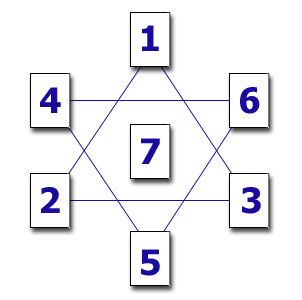
Each of the seven positions of the Star Spread has a specific meaning. The positions and their meanings are:
- The Problem: This position describes the current situation, positive or negative.
- Positive Influences: This card indicates what influences might be affecting the situation in a positive way. These influences should be encouraged.
- Negative Influences: This card indicates what influences might be affecting the situation in a negative way. These influences are to be minimized, if possible.
- Past Influences: This position shows what influences are losing their potency in the situation. These things should be released, as they no longer are important.
- The Present: This card reveals what is presently occurring in the situation. This position also usually indicates whether change is necessary or not.
- The Future: The card that occupies this position indicates the immediate future of the present situation. It is essentially a culmination of the influences of the last four cards.
- The Final Outcome: This card indicates how the situation will ultimately resolve itself. The term ‘final outcome’ might be a little misleading, since the Tarot tend have only a six-month time frame.
The Star Spread is incredibly simple. It can be used on its own, or to gain further insight into particular cards in other Tarot spreads, such as the Celtic Cross Spread or the Magic Cross Spread. The Star Spread is a creative way to gain clarity from a situation that is perhaps all too complicated.
The Horseshoe Tarot Spread
The Horseshoe Spread of the Tarot is a very effective tool for gaining additional insight into a particular question or situation. Though straightforward and easy to learn, it offers the reader a chance to thoroughly examine a particular area of interest. This Tarot spread is very specific, and can be used to answer questions about careers, spirituality, health, or any number of important issues.
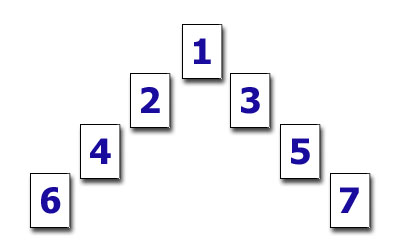
Each of the seven positions of the Horseshoe Spread has a specific meaning. The positions and their meanings are
- Past: This card represents the past influences that may still have some potency in the current situation. These influences may either be the distant or recent past.
- Present: This card reveals the present influences that are affecting the situation at the moment.
- Future: In every situation there are hidden factors that you may not be fully aware of. This is the card that reveals those hidden factors that will have some potency in the immediate future.
- Obstacles: This card focuses on the obstacles or complications which are currently creating difficulties in the present situation.
- Opinions: Everyone has an opinion, for good or ill. This card reflects the opinions of others in regards to the present situation. This may include the attitudes and behaviors of others that directly affect your current circumstances.
- Suggestion: This card is linked to the final card in the spread. It indicates a possible suggestion or course of action that can be taken to assist in resolving the current situation.
- Final Outcome: This final card of the Horseshoe Spread typically represents the outcome of the present situation if the Suggestion card is taken seriously. If the Suggestion card is ignored, this card will bear little resemblance to the resolution of the situation.
The Celtic Cross
The Celtic cross is the most famous spread. You can use it in most situations. I give you an extensive 11 card version of the Celtic cross.

The Cards
- Significator – Who the Querent is at the present moment.
- Atmosphere – What surrounds the Querent at the present moment.
- Challenge – What challenge does the Querent face at the present moment.
- Foundation – What the Querent brings to the present from the past.
- Past – The recent events of the Querent’s past.
- Crown – What is foremost of the Querent’s mind at present.
- Future – Likely events in the Querent’s future.
- Public Opinion – What the Querent’s friends & family are thinking.
- Relationships – The Querent’s romantic life.
- Hopes & Fears – What the Querent imagines, hopes for & fears.
- Final Outcome – How this phase in the Querent’s life is likely to resolve.
5 Card Spread

The five-card spread expands on the three-card spread. It brings in more elements that balance the energy of the questions. Here you will find out the strengths and weaknesses of the tarot deck.
- Question 1. What do you need from me as a reader?
- Question 2. What can you help me with?
- Question 3. Describe yourself.
- Question 4. What can you not help me with?
- Question 5. What is your first message to me?
The Fifteen Card Crowley Spread
This Crowley spread is my favorite for the past 25 years. Don’t worry, it is simpler than it may first appear. It may help to think of it as five groups of three cards, which are based upon the four elements with spirit uniting them at the center of the spread. The number order of the 15 cards follows a spiral starting from the center and progressing counter- clockwise. The cards are grouped together in threes

- 1: This card represents the querent, the atmosphere or nature of
the question or the issue ~ the main influences which surround the querent- 2: Circumstances surrounding the situation.
- 3: Personality of the questioner.
- 4, 8, 12: These cards indicate potential future events and influences. They show what direction the querent's life will naturally take, unless alternate steps are taken to change the course of events.
- 5, 9, 13: These cards represent an alternative course of action that the querent may choose to take. Or can stand for far future (6 or more months), if the querent continues on with the near future that was indicated in cards 4, 8 and 12
- 6, 10, 14: These cards share the psychological implications of the situation (or spiritual/karmic lesson). They assist the querent in making whatever decision is needed and offer a glimpse of the reason why the querent is experiencing the situation. (What is being learned or gained from the situation.)
- 7, 11, 15: These cards show the outcome: forces at work ‘beyond the querent's control’. The destiny or karma
Elemental Attributions:
Cards 1,2,3, represent the 5th element - that of Spirit. Earth represents near future - 4,8,12. Water is far or alternate future - 5,9,13. Air is represented by 6,10,14 – the 'psychological basis'. Destiny/Karma/Outcome (7,11,15) would then, be Fire. Note how the ‘opposing’ elements are in opposing corners of the spread...
Hints to Reading the Crowley 15 Card Spread
The center card of each block can be treated as the Principal, and the cards around it become the Modifiers. Since there is a spiral ordering of the spread, we can understand this to mean that one of these Modifiers represents an earlier stage. So, for example, in the Air or psychological section of the spread, 10 is the principal card, while 6 shows earlier influences and 14 would then indicate later influences. Pretty cool spread, huh?
The Astrological Tarot Spread
The Astrological Spread of the Tarot is a spread that has many different variations. It uses thirteen cards, usually laid out in a circular fashion. Some Tarot readers are not familiar with this spread, but it can be one of the most interesting Tarot spreads to decipher.
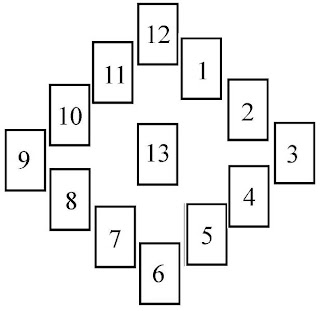
Each of the thirteen positions of the Astrological Spread has a specific meaning. The positions and their meanings are:
- Ares: This position describes the individual. It can show how he or she normally works through difficulties.
- Taurus: This card refers to the current financial situation and how it relates to the problem. Alternatively, it may concern beliefs or feelings about practical matters, such as money, but not relate directly to finances.
- Gemini: The card that occupies this position rules all forms of communication. It can indicate how an individual communicates and perhaps even what could be done differently.
- Cancer: This position relates to either the physical or emotional home of the individual. It might describe the need for emotional security, the search for a physical home, or any number of things.
- Leo: This card controls romance, art, and pleasure. It should be read in conjunction with Libra and Capricorn.
- Virgo: This position often indicates health, whether it’s physical, spiritual, emotional, or mental. It can also refer to work, though this card does not deal with a ‘true’ calling.
- Libra: All types of relationships are ruled by this card. This position could refer to romantic or business relationships, or it could refer to simple friendships. The Leo card should be referred to when interpreting this card.
- Scorpio: The card which appears here will likely deal with either an emotional issue or a firm objective. Which it is will be determined by the card itself. Usually, this card refers to some aspect of sex, money, or death.
- Sagittarius: This position indicates education, hope, and changes in attitudes or beliefs.
- Capricorn: This card reveals ambition, drive, and talent. It can also refer to work, but unlike Virgo, this ‘work’ would be more along the lines of a true calling.
- Aquarius: Friends and social groups are rules by this position. This can be what is already present in an individual’s life, or what is hoped for in the future.
- Pisces: This card is ruled by secrets. Hidden hopes and secret fears are revealed here. This card can also indicate blocks or obstacles to success. This is the card of vulnerability.
- Final Outcome: This last card indicates the ultimate outcome of the entire situation. The term ‘final outcome’ is a little misleading, as the Tarot tend to only reveal a six-month time frame.
The Astrological Spread is more complex than many of the spreads used by Tarot readers today. It tends to be best suited to those people who have a working knowledge of astrology and the zodiac, or at least are interested in these things. It is a complicated spread with great potential.
The Mirror Tarot Spread
The Mirror Spread of the Tarot is a very effective tool for gaining insight into problems or difficulties concerning relationships. Though typically used for established relationships, this Tarot spread can also be consulted for budding romances.

Each of the eight positions of the Mirror Spread has a specific meaning. Often this spread will reveal inconsistencies between two mirrored cards. This usually indicates a need to reevaluate a particular point of view.
The positions and their meanings are:
- The Individual: This card represents the person who is the focus of the reading. This could be you or someone else, depending on who you focused on during the preparation phase of the reading.
- Your View: This card indicates the way you see the other person in the relationship.
- Their View: This card reveals how that person sees themselves.
- Inner Meaning: This card represents what the other person means to you.
- Reversed Meaning: This card indicates what you mean to the other person.
- Obstacles: This card reveals possible obstacles within the relationship. Sometimes this card will appear to be positive, but look beneath the surface for its true meaning.
- Strengths: This card represents the strengths of the relationship.
- Final Outcome: This card indicates the probable outcome provided circumstances stay as they are. This card can be changed simply by disrupting the status quo. This change could be either positive or negative.
The Mirror Spread of the Tarot can reveal depths to a relationship, new or old, of which you may not have been aware. Remember that any major life decision should not be made solely based on what a Tarot spread may or may not indicate. However, the Mirror Spread can be used to gain additional insight when it is needed.
Want to purchase your own decks check out these sites
Find me on Social Media
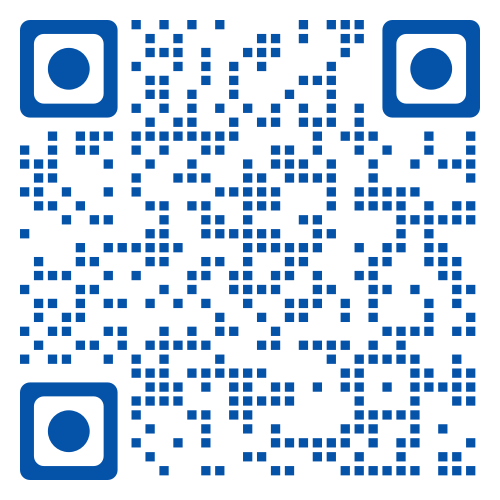 |
Don't forget to bookmark me to see updates.. Copyright © 2000 - 2025 K. Kerr Most recent revision July 01, 2025 08:42:08 PM
**DISCLAIMER: THIS WEBSITE DOES NOT PROVIDE MEDICAL ADVICE: The information, including but not limited to, text, graphics, images and other material contained on this website are for informational purposes only. No material on this site is intended to be a substitute for professional medical advice, diagnosis or treatment. Always seek the advice of your physician or other qualified health care provider with any questions you may have regarding a medical condition or treatment and before undertaking a new health care regimen, and never disregard professional medical advice or delay in seeking it because of something you have read on this website. |







